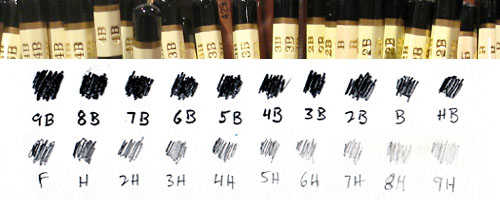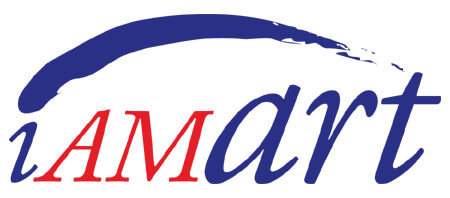selecting drawing pencils
the H, B, and numbers on pencils can help you choose the right pencils for your art

Whether doing a quick sketch, a study or rendering a finished piece, the sort of pencil you need depends on its hardness. Harder pencils (sometimes called drafting pencils) make a lighter line and are better for sharp lines and defined edges. Softer pencils are darker and better suited to shading and filling in space. But, what determines a pencil’s hardness? And how can you tell which is which?
Since the late 18th century artist’s pencils have been made in what is known as the Conté Process. This involves mixing finely ground graphite powder with clay or other substances and then baking them. Changing the ratio of graphite to other substances allows more or less graphite to flow on to the page and effects how well it holds a point.
There have been a number of systems in place to distinguish pencil hardness. In America there is a number system where #1 is the softest and #4 the hardest. For artists’ pencils, the European system is more common, which uses a combination of numbers and the letters: H (think of ‘H’ for ‘hard’) and B (think of ‘B’ for ‘Black’). This scale covers a wide range of hardnesses, usually ranging from 9H (the hardest) to 9B (the softest). In the center of the range is HB, the equivalent to the American standard #2 pencil. The HB or #2 pencil is considered the preferred hardness for general writing and sketching.
These coding systems are informal and somewhat inconsistent. You may encounter variations like HH (2H), BBB (3B) or F (Fine point H). Despite being made through similar processes, pencil grading differs slightly from one manufacturer to the next, so always give your pencils a test scribble and be sure you get the hardness you need.
